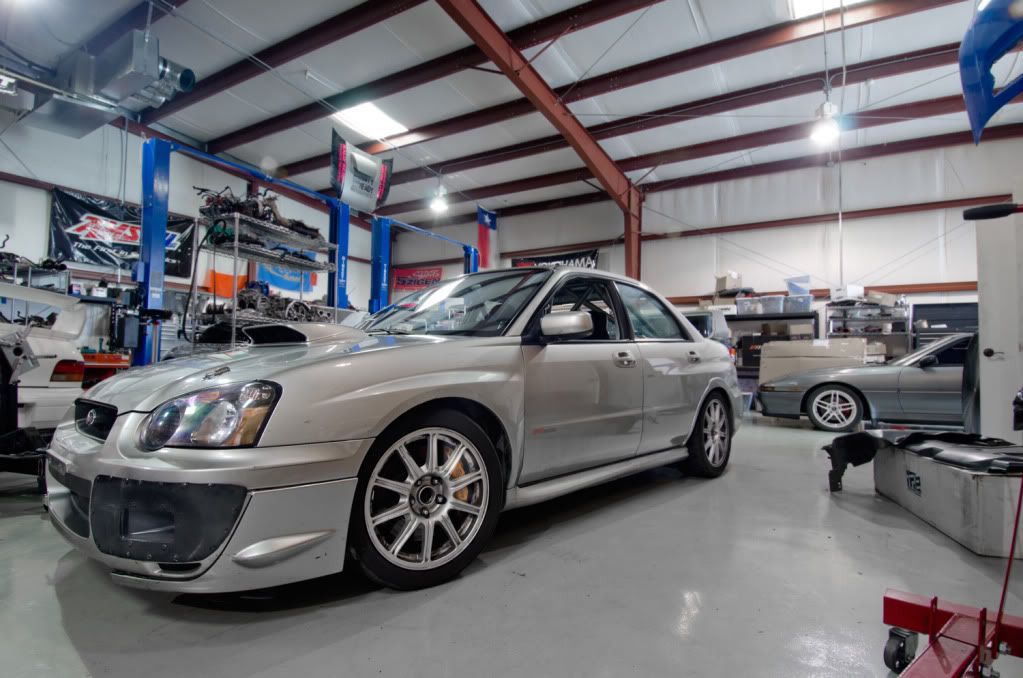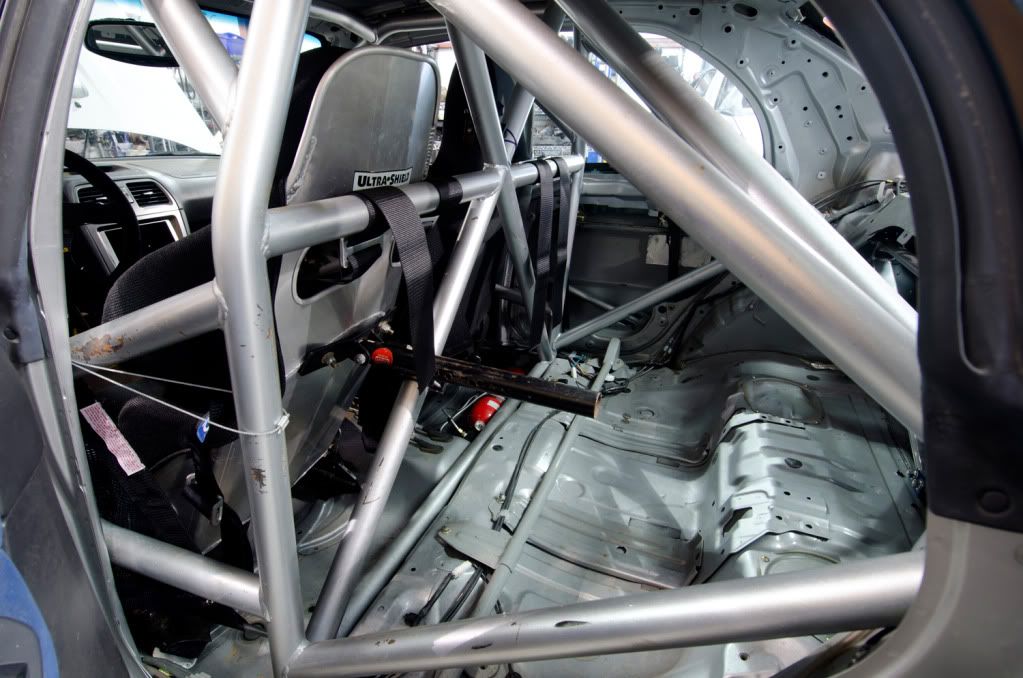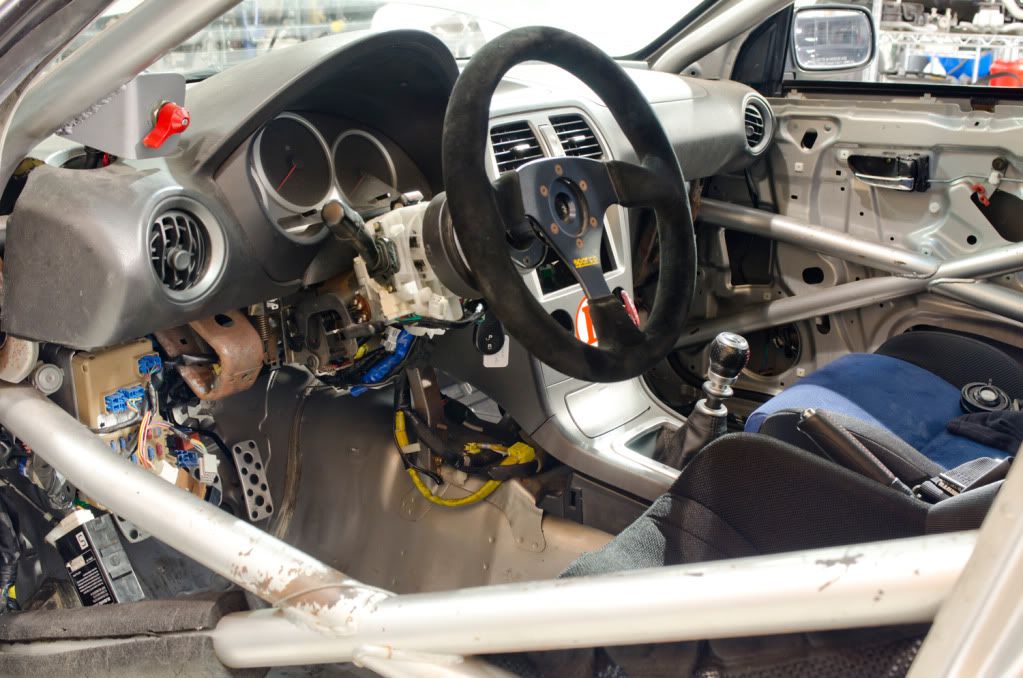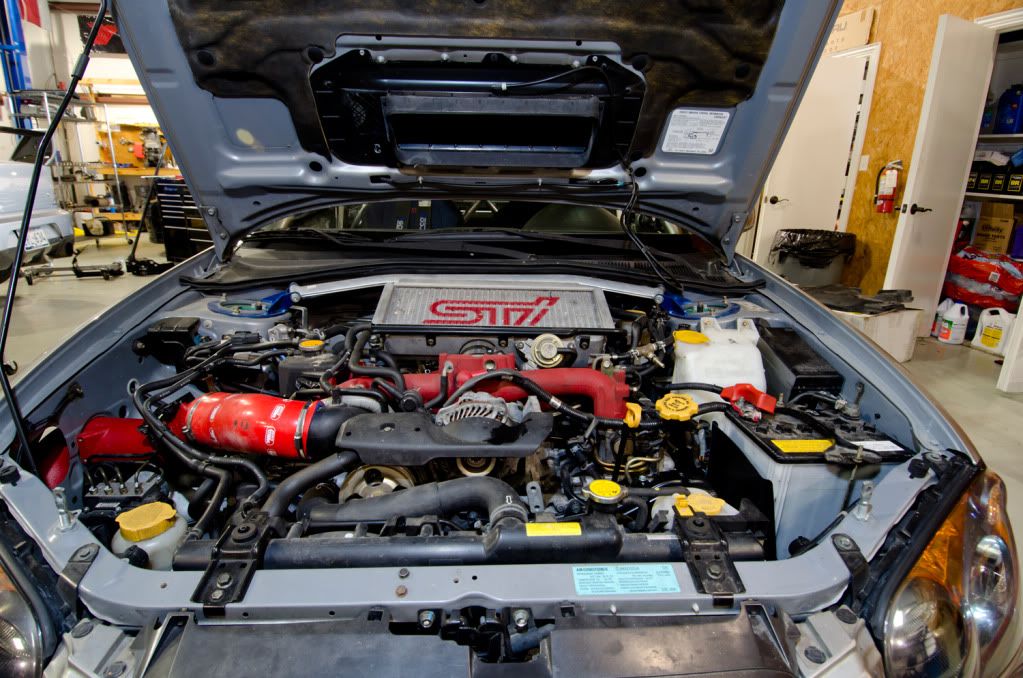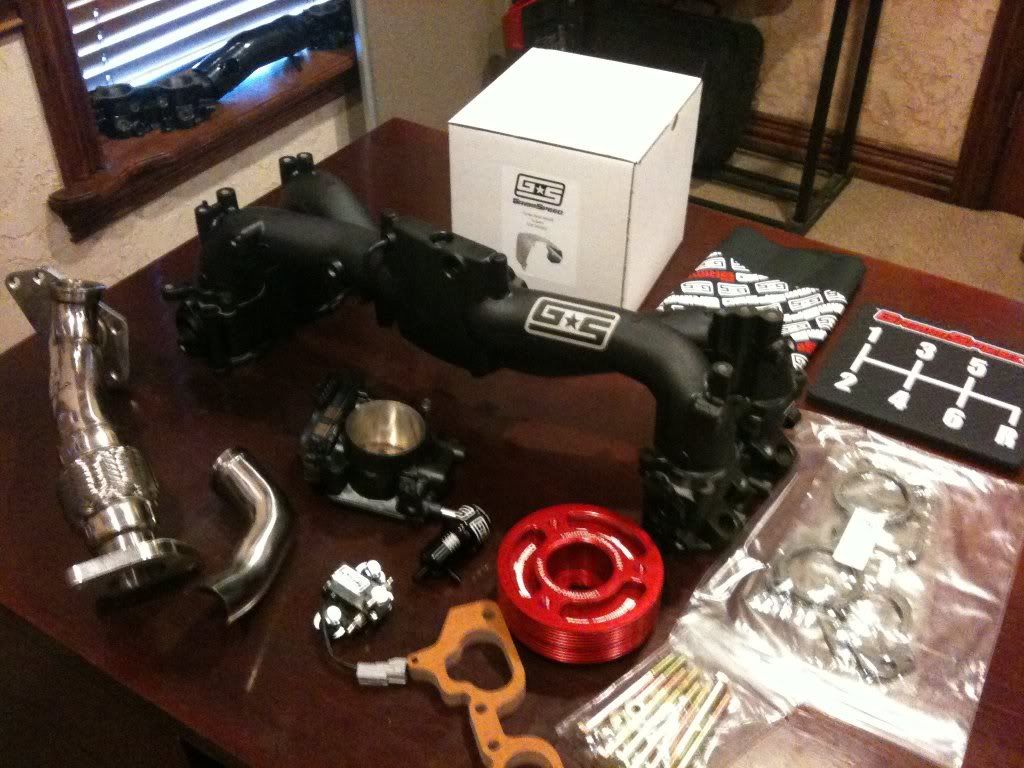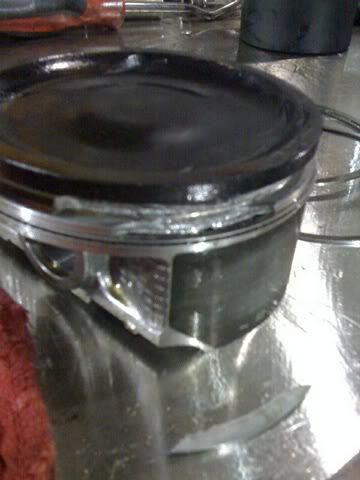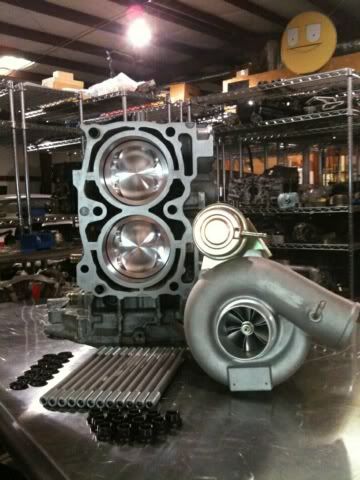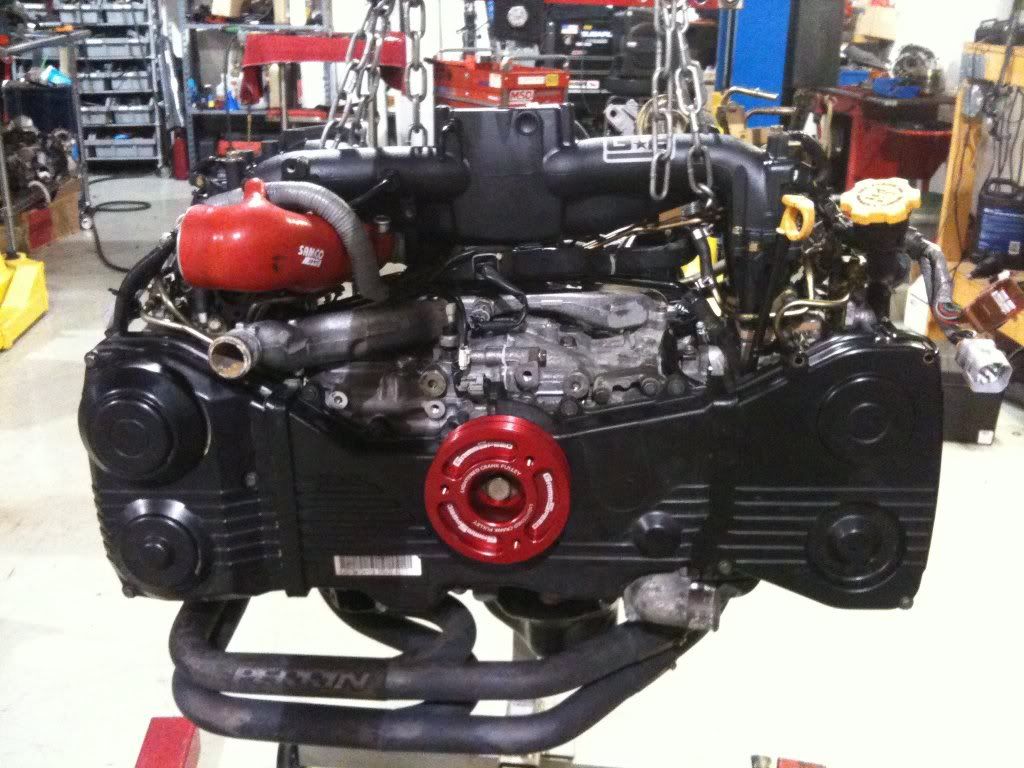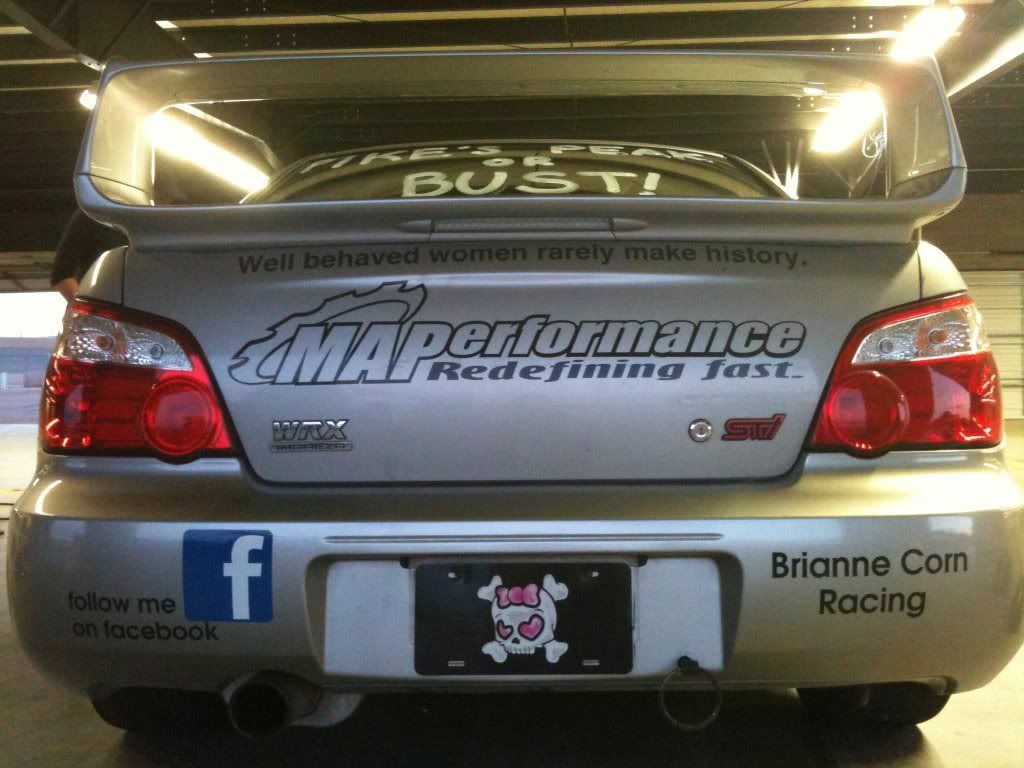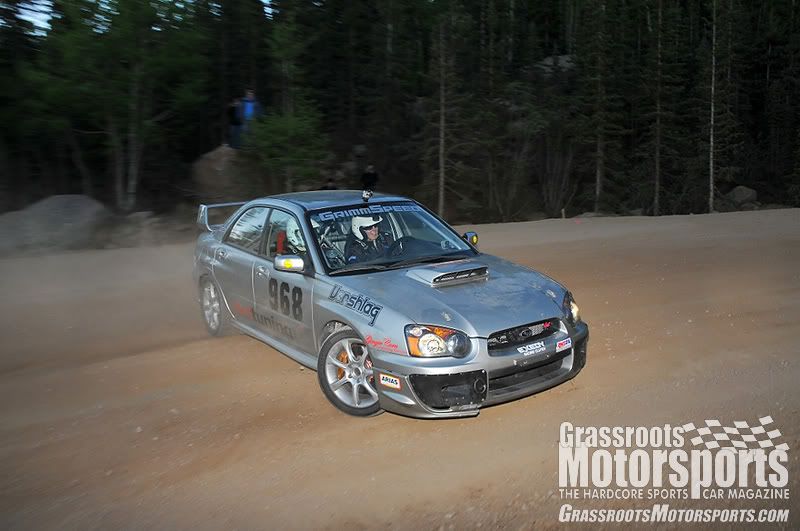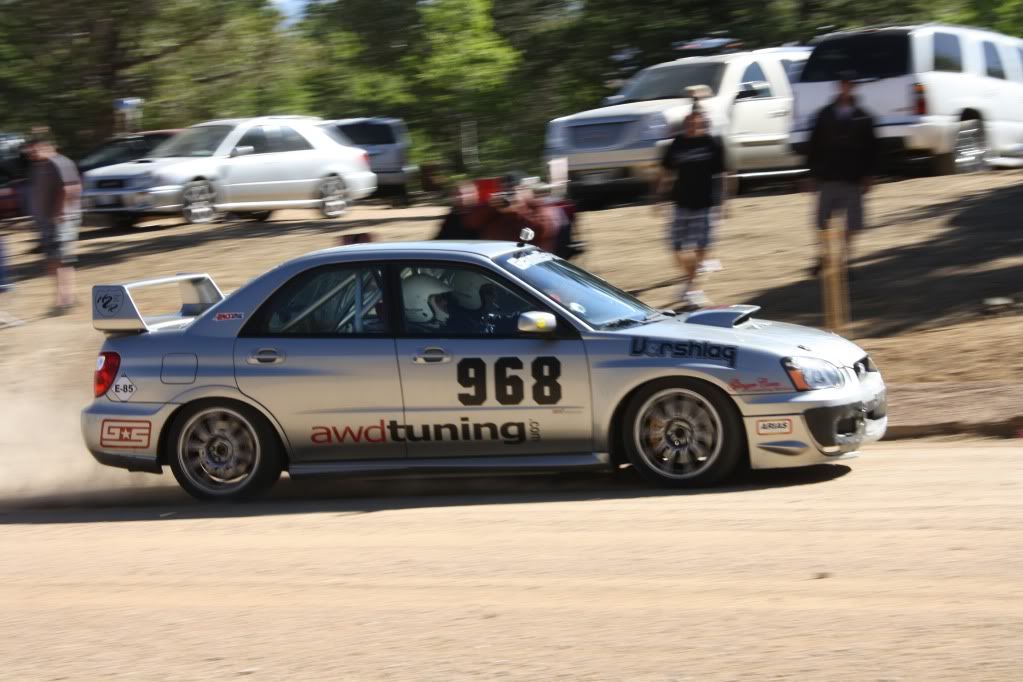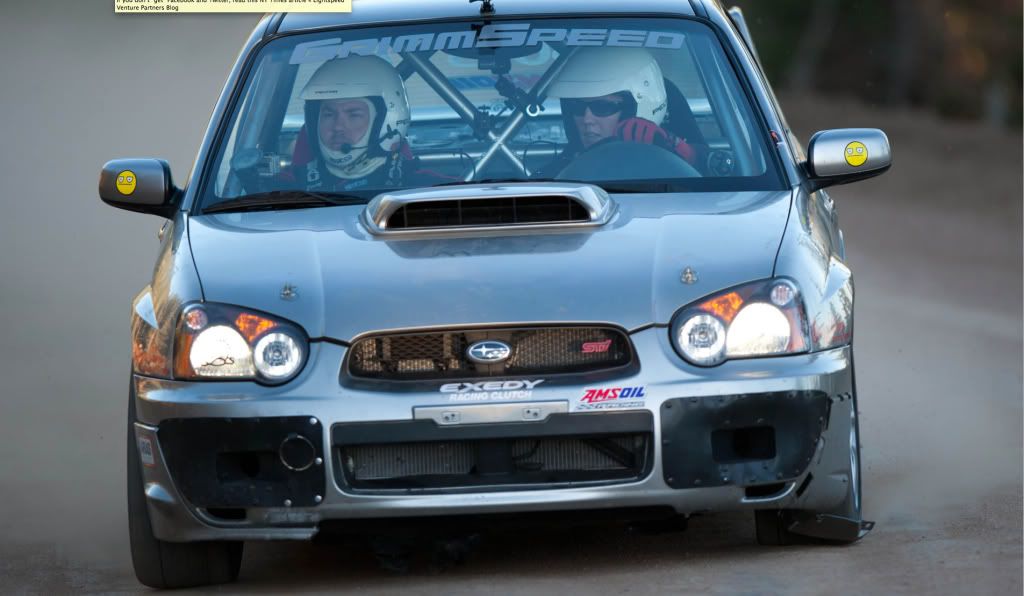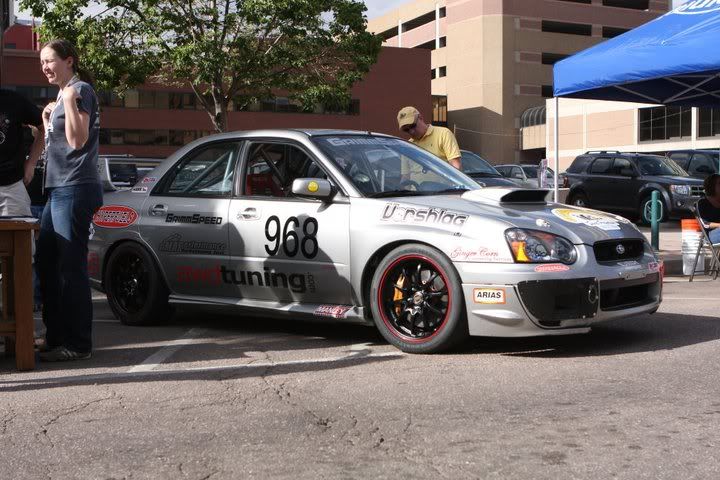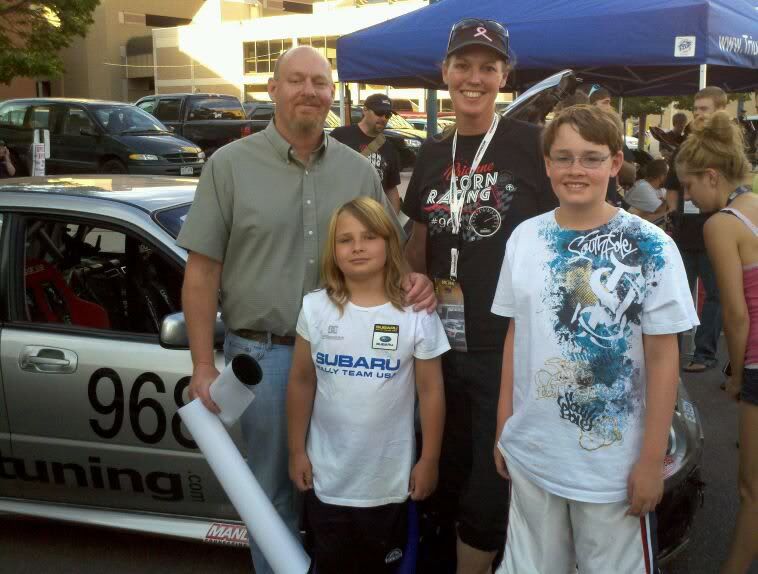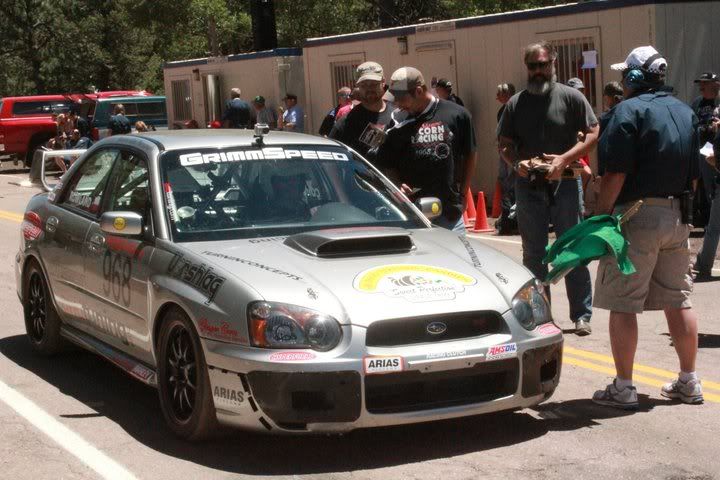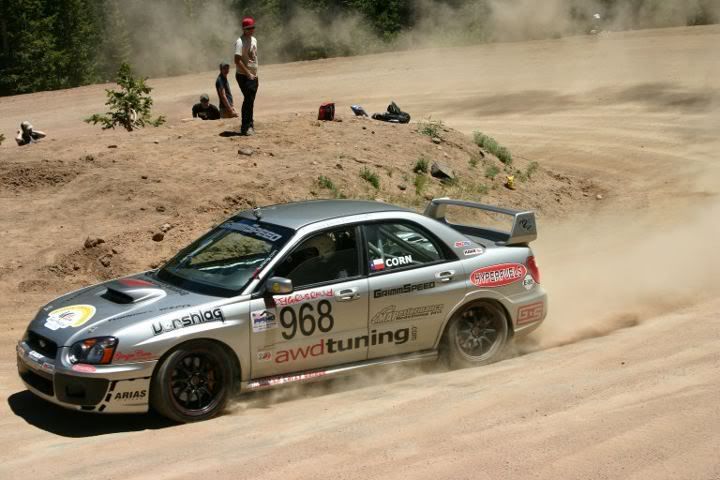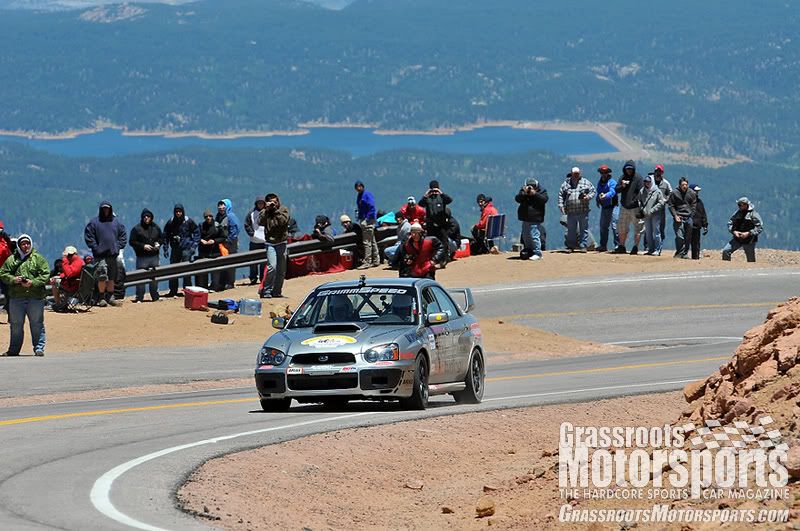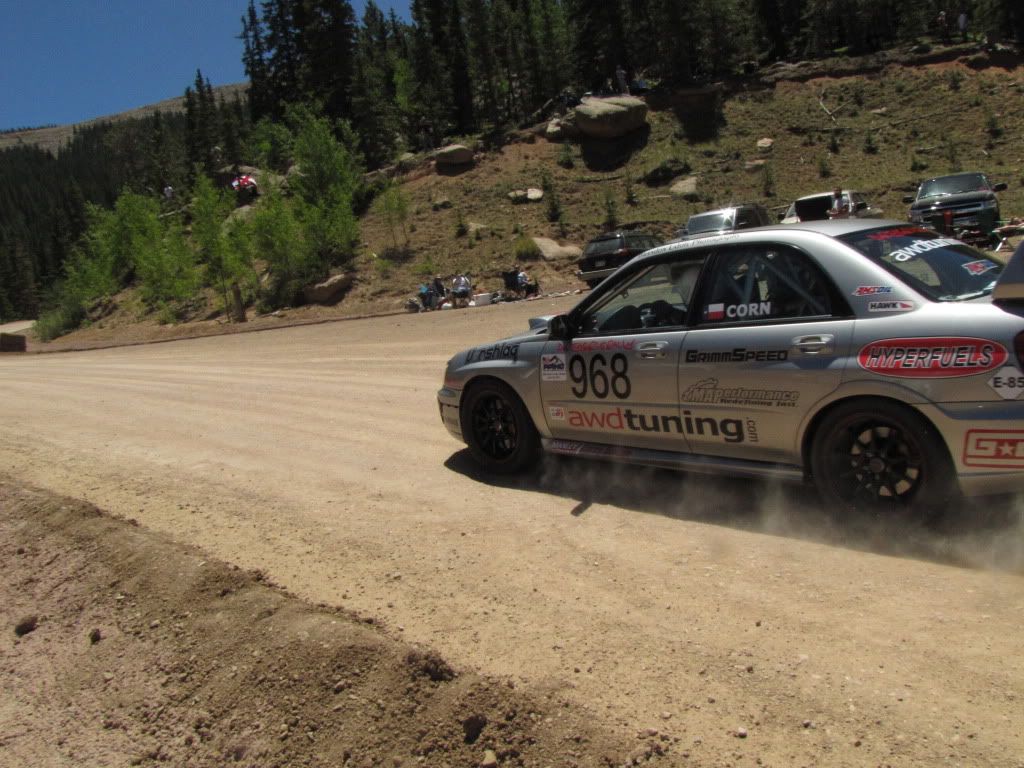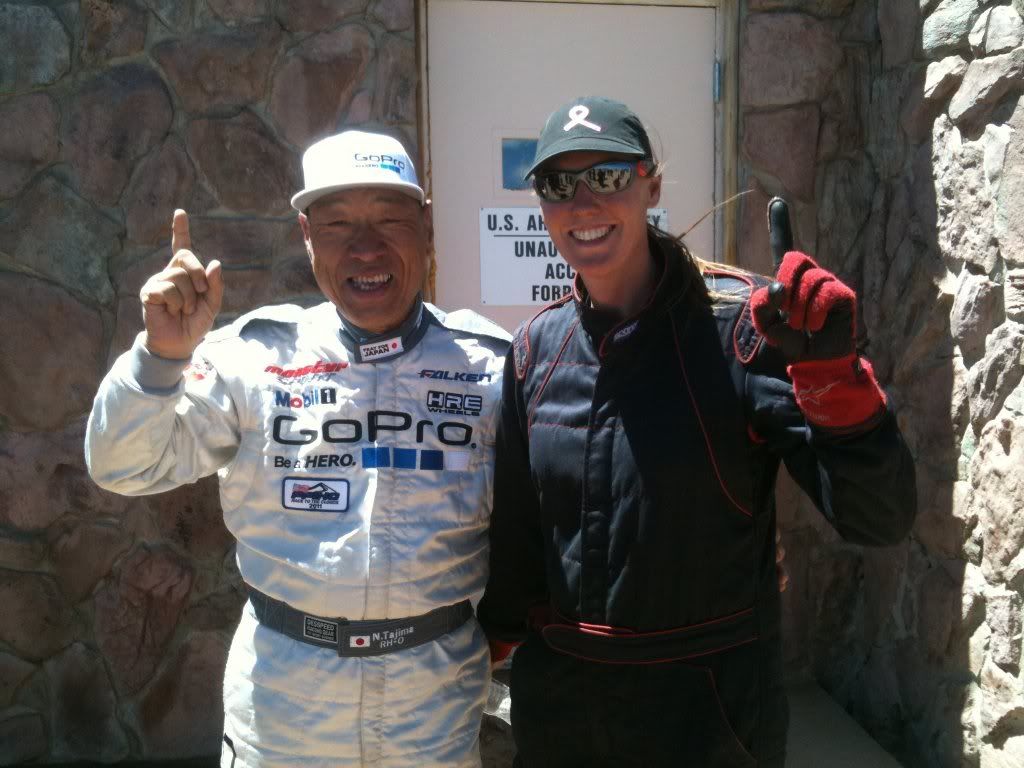And some of my racing buddies wanted to know more of the logistics about attending the PPIHC, so I wrote this about it. Again, sorry for the cut-n-paste, but it's valuable info and might get some more competitors out there.
Pikes Peak – where to begin? It’s famous, and lots of famous drivers have competed there. It’s long for a hillclimb. And it’s spooky.
It’s an event that lots of racers feel is above them and they don’t ever think about attending. But, that’s not always the case. If you are experienced, and can field a good looking car, then it’s likely that the PPIHC will accept your application and issue an invitation to compete at the hill climb. Yes, it’s an invitational and they use that fact to weed out the incompetent drivers and completely unprepared cars. We did it this year after two years with a motorcycle. Because of our previous performances with the bike, they were waiting for our application this year. But the first year was a little tougher. Brianne had never really competed on a motorcycle. She had owned one continuously since she was five years old. She had a lot of autocross awards in some fairly high end classes. She had some rally and Baja experience. But the reason she was able to compete was her references. She listed two motorcycle instructors that had been trying to recruit her to teach motorcycle racing even though all she had ever done was track days.
Another issue with entering the event is the cost. Just the entry fee is expensive. If you send in your application as soon as registration is open, the fee is around $1350. If you wait until six weeks before the event, it is around $2200. The bikes have traditionally been half that price.
Well before event week starts there’s a practice time. I don’t know much about it except that it’s about two weeks before race week and PPIHC charges extra for it.
Most of the teams stay in Manitou Springs, the northwest corner of Colorado Springs. There are lots of motels and cabins available. Some with decent parking. Ask for a weekly rate. We’ve paid between $400 to $650 for 7-10 days at the places we’ve stayed. There are also a number of campgrounds if you are in an RV or tent. Rocky Top is one favorite. Another is the Garden Of The Gods campground.
Driver’s and co-drivers should be familiarizing themselves with the road. Lots of out-of-town racers play “Dirt” (version 1) on PS3 game console as it has a fairly realistic version of the road. Others watch videos. Still others just drive the hill dozens of times. If you are going to drive the hill, watch the brakes on the downhill sections. The rangers have a booth setup at the Glen Cove area where they check brake temps with an infrared gun. If your brakes are too hot, you have to wait 20 minutes before proceeding. We always played the game and arrived at the checkpoint with brakes at ambient air temperature. Some classes allow rally style co-drivers. Other drivers use audio notes on an iPod.
The schedule for race week this year started Tuesday morning with registration and tech inspection at the Crowne Plaza Hotel. Arrive early if you can and have some of your crew get in the tech line with the car while the driver, co-driver (if you have one) and the rest of the crew go inside to register. If I remember correctly, the driver, co-driver and four crew members credentials are included with the entry fee. Additional crew cost $40 per member. They have to appear in person to sign the waiver before they receive credentials. To put the cost in perspective, public or crew without credentials access cost $12 per day to go up the Pikes Peak Highway. Race-day access without credentials cost $45 at the gate, but teams can buy tickets ahead of time for $40. Credentials and tickets are available from 11am to 4pm Wednesday through Friday, all day Tuesday, and I’m not sure about Saturday. If you have crew arrive late, remember that they have to sign the waver before they can get credentials, or they can pay the $12 fee the first morning and then go get credentials that afternoon.
During registration the driver will receive an ID packet that will contain the PPIHC event sticker for the car, an event patch for their driving suit, a schedule and their race-day pit assignment. The sticker doesn’t need to be on the car for tech or practice, but it needs to be there for race day.
When registration is over, join your crew already in line for tech. Send your remaining unregistered crew back inside to sign waivers and grab their credentials.
At tech the safety inspection will cover the “Safety & Construction” portion of the rulebook. Seems like most people always get just about everything right except that aftermarket steering wheels require padding. Other than that, most of the cage construction and other safety rules are surprisingly lax compared to rally and high end roadracing series. Double-check that your car numbers are the right size as it’s been an issue in the past. After you think tech is over, stop at the transponder tent. This year they switched to a passive transponder that lasted the entire week rather than the older units that required recharging every night. It made the early morning practices a lot easier.
After registration and tech are over, you are done for the day. I suggest that the driver and co-driver run recce and try to familiarize themselves with the road. You need a non-racecar for this. And your credentials get you onto the road for free. If you need garage space or a track to test the car, I recommend using the Pikes Peak International Raceway about 20 miles south of Colorado Springs. This year the cost was $150 for the week where we had full access to the garages and partial access to the oval, skidpad and the autocross lot behind the facility. The garages are lit, flat, smooth, covered and have oil and coolant disposal. Although access was supposedly only available during the day, we were reminded by the afternoon-evening security guy (named Dallas) that he would arrange for us to use the facility night or day. The track owner was also on board for this and frequently came by to make sure we had everything we needed. Another alternative that we did not use was the “Do It Yourself Garage” in Colorado Springs. They have lifts, cherry pickers, pullers, shop tools and other facilities you’d expect in a professional repair garage. Rates seemed to be around $30 per hour if using their lift/tools and the owner would work with a team to be available anytime. There are a number of new-car dealerships on Motor Street, and near downtown there are a couple of speed shops that sell some racing parts (American V8 and circle track stuff) and a good race fuel supplier. For bikes there are a number of shops in the area including Apex Sports.
There’s not a lot of room on the Peak for big transports. Any rig longer than 60 feet (truck and trailer) is almost impossible to bring up the hill. Most teams that have a larger transport also rent a box-van and open trailer to bring their racecar up the hill for practice days. If you have to have your huge trailer on the hill you can make arrangements with the PPICH officials. You might have to pay extra and/or arrive extra early for practice and race days.
Most spectators don’t realize that we get to practice on the Peak before the event. In fact we get three practice days. The course is broken up into three segments. The competitors are broken up into three groups by class and each group practices one segment per day. Traditionally the lower segment is also used for qualifying, which give you your starting place in line. In the past the Motorcycles and associated ATVs, sidecars and similar practice on the lower section first, then the mid then the top. The Unlimited, Open Wheel, and AWD Time Attack start in the middle section, then the top, and then qualify on the bottom section on Friday. The Open, 2WD Time Attack, Stock, Electric, and Vintage usually start at the top, qualify the second day and then practice the middle on the third day. Practice days start early. We usually got up around 2:30am and were going up the hill at 3:15. Access to the upper areas is cut off at 4am. Each area has a driver’s meeting at 5am and then practice runs start as soon as the sun crests the horizon. Usually cars are flagged off at one minute intervals. They wait at the top of the run until all the cars have run, then they return to the practice pits as a group. Rinse and repeat and they may get as many as six or seven runs at the two top sections, and four or five at the longer bottom section. The officials seem to allow us to run as long as we could finish a run group before 9:30am. Then they closed us down. After 9:30 the gates were open to the public and two-way traffic was allowed on the highway. The rest of Wednesday and Thursday are free. The crew used the time to make major setup changes, repairs, and prep for the next day. The driver and co-driver used the afternoons to make more recce notes. Friday afternoon is FanFest which I’ll cover later. When you practice on the lower section, try to find your race-day pit location and park there. It will help you familiarize yourself with the topography as the pits are scattered in the woods and you may need to see what access issues you need to overcome on race-day. Practice times are often hand posted near the start line for each section, and they are supposed to be posted on the PPIHC website that afternoon, be because of HTML glitches, most teams didn’t have their times until a day later.
One of the things I wanted to do on practice days was to have two crew members at the finish areas to take tire temps, intercooler temps and brake temps. We also had them photograph the car when they could. Only one other team was doing this, the Millen team. We didn’t have any issues sending the two crew members to the top of the practice section during the early morning traffic. But like everyone else, once they are up there, there’s no coming down until the session is over. There’s also very little cellular communication available. Voice communication is almost completely unavailable. Sending text messages was the best method, but even it was spotty.
You need to prep for practice days. The ONLY facilities available on the upper sections are porta-potties and they might even be out of paper. Bring any water, food, coffee that the crew need. The “Short Stop” concession stand has always been available at the lower section with coffee, water, sodas and breakfast burritos, but there’s no promises. Dress warmly. This year it was surprisingly warm in the upper section as the temp didn’t fall below 43 degrees! Last year it was around 15 degrees with a steady 40mph wind. Once the sun comes up it starts heating up quickly, but you need to be prepared for cold, wind, and rain-sleet-hail-snow. Bring everything you need for the car. Extra tires, air, fuel, etc…I assume you know how to test and prep your car and you know what’s needed. There’s no way to go back to town from the upper sections. From the lower section you still have access, but you will lose at least 40 minutes sending someone on a round trip. Have every person bring their credentials or be prepared to spend $12 at the gate to get them in. If you have to pay, pull out of line at the ranger’s gate so you aren’t blocking the parade of racers that are streaming up the hill. Prepare for the altitude! If you’re a flatlander you won’t believe how weak and out of breath you become at 14k feet. Take some aspirin (real aspirin) and avoid caffeine. You also won’t realize how much you are sweating in the dry air if you are used to Texas’ 90% humidity. Make sure your stay hydrated as dehydration can bring on altitude sickness.
Fan Fest is scheduled for Friday evening from 5pm to 10pm. The city shuts down a major street downtown and has a big fair. There’s a fire station chili cookoff, motorcycle-bicycle-skateboard acrobats, various local causes and vendors and some Pikes Peak contestants and cars on display. If you have the fastest qualifying time in your class, you are required to attend Fan Fest and have your car on display. If you would like to have your car on display, talk to the PPIHC officials. You may be able to display it for free, or they may want you to rent a booth. We had two cars on display with a table to sell t-shirts and sign autographs. Our sponsors were there to answer questions about their products on the car and we ran video from practice days. I don’t know what the fee was, but I don’t think it was much. If you don’t have a booth, and haven’t qualified first, Fan Fest is optional. There are a lot of fans that come out to see the cars and teams, and a lot of locals that come out to get drunk. But I’ve always enjoyed eating the chili and getting the chance to socialize with some of the other teams during this free time.
Saturday is the official “rest day” with nothing scheduled. Use it as needed to do more work on the car, and/or send the driver up the hill another half dozen times.
Sunday is race day. We were on our way up the hill by 3:15. As you approach the Pikes Peak Highway you’ll see a huge line of spectator cars waiting for the gates to open. Competitors can enter at 3am and spectators at 4am. Once you leave the main highway, the Pikes Peak road is one way traffic only. So don’t wait in line with the spectators. Use the left lane (at a prudent speed) to get up to the ranger’s gate. Drive the few miles from the gate to the start area and find your pit and prep the car for your start.
The driver’s meeting is at 8am. I think the first racers were released around 9am. They have a transponder check station right before the start – and the officials will check to make sure it’s still working. The start line is actually 100 feet or so before the starting transponder loop. Depending on class, cars are released about 5 minutes apart. You only get one run unless you are red flagged. If you are red flagged, your car will eventually be led back down the mountain and the crew will get some short amount of time like 15 minutes to re-prep the car before it is started again. In the last three years I’ve never seen them have to do this. This year they had two cameras on course that broadcast live in addition to radio commentary from the start, midway, finish line and from the winners at the top. Times are broadcast and posted on the “Short Stop” concessions stand near the start line. After all the racers complete their run, they all parade down the hill receiving high-fives and congratulations from the spectators. The award ceremony is held immediately after the parade is completed in a tent at a clearing near the start line. The presentation is short and it’s good manners to support the other racers. After that, get the car loaded and join the traffic jam of spectators and racers leaving the mountain. There are lots of parties in Manitou Springs and Colorado Springs that night as everyone celebrates. We usually BBQ with some other Central Texas motorcycle racers that we know.
I hope this description hasn’t scared anyone off. This event has been easy to attend. And I think a number of road racers and time trials guys that I know could participate and be competitive.












